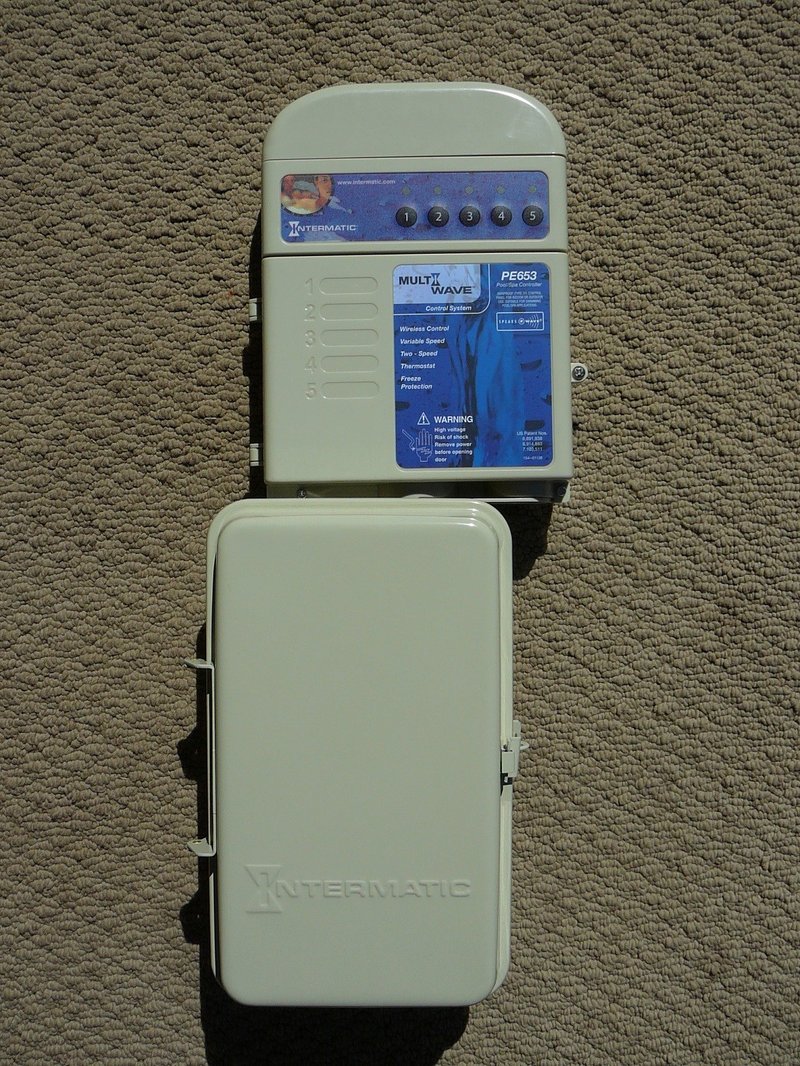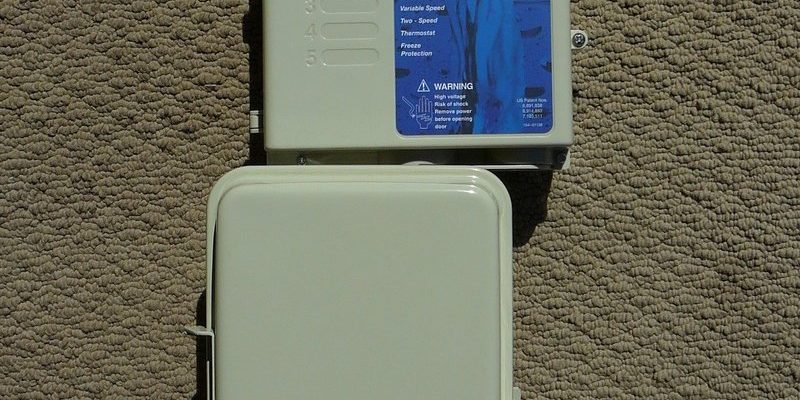
Here’s the thing: programming your Intermatic pool remote isn’t mystical or high-tech wizardry. Most of the time, it’s a matter of getting the remote and the control box to “shake hands” using a specific sequence. *Think of it like syncing a TV remote, but with a splashier twist.* I’ve helped more than a few friends get their remotes running—so I know firsthand how frustrating it feels to mash buttons with no results. Let’s walk through the process step by step, with plain language and no jargon.
Getting to Know Your Intermatic Pool Remote
Before diving into programming, it’s worth taking a minute to actually look at your Intermatic pool remote. This isn’t just any old universal remote off the shelf; it’s made specifically for pool and spa control panels—usually matched with an Intermatic PE series controller or similar system. You might see a few models out there, from the classic waterproof handhelds to newer, sleeker versions with digital displays.
Most Intermatic pool remotes have a cluster of labeled buttons—think “Pool,” “Spa,” “Lights”—along with a power button and maybe a “Sync” or “Learn” button hiding somewhere. If you’re lucky, the battery compartment’s got a sticker with the model number. If not, check the front label or even the back plate.
Why does this matter? The right programming steps depend on knowing your model. *If you’re unsure, snapping a quick photo and Googling the number usually clears things up.* And honestly, treating your remote gently—especially during setup—makes the rest of the process way less frustrating.
What You Need to Program the Remote
Let me explain what you’ll want handy before you even think about pushing buttons. For starters, make sure you have the actual Intermatic control center (the big, weatherproof box near your pool equipment). The remote alone can’t do much without it. You’ll also need:
- Fresh batteries in the remote—low battery can make signals flakey.
- A tool (usually a Phillips screwdriver) to open the control panel box if needed.
- Your remote and control box within a few feet of each other.
Most folks forget about the batteries! A half-charged remote might look “on” but fail to send a strong code. If you keep running into trouble later, swapping batteries is an easy troubleshooting trick.
Last thing: double-check you’ve got a clear path to the pool equipment. Don’t try programming while standing in a puddle or with sprinklers blasting you in the face—trust me, it’s not a good time.
Step-by-Step Programming Instructions
All right—let’s get into the good stuff: actually programming your Intermatic pool remote. These steps work for most Intermatic models, especially if you’re using a PE653 or similar unit. If your remote looks wildly different, don’t panic—most follow this general order.
- Open the control panel box (the “brains” by your pool equipment). Look for a button or small hole labeled “Learn,” “Pair,” or “Sync.”
- Press and hold the Learn/Pair button on the control panel until you see a light blink or hear a beep. Some units require a pen tip to press a recessed button.
- Within 30 seconds, on your Intermatic pool remote, press the main “Power” or “Sync” button (sometimes it’s the “Pool” button) for a few seconds. You’re essentially sending a pairing code from the remote to the panel.
- If pairing is successful, you’ll usually see a light flash or hear another beep on either device. If not, try again from step 2—sometimes it just takes another go.
Some newer remotes have an LCD display that will show “Synced” or “Code Accepted.” Old-school models might only give you a quick blink. *Don’t overthink it—if the pool functions start reacting, you’re good.*
Pro tip: If the remote doesn’t pair after two or three tries, pull the batteries, wait 60 seconds, and start again. Sometimes the electronics just need a reset.
Common Problems and Troubleshooting Tips
You might be wondering what to do if…well, things just aren’t working. Here’s where most people hit a wall:
- The remote won’t sync: Double-check the batteries first. If the control panel’s “Learn” light doesn’t come on, cut power to the panel (breaker box), wait a minute, and turn it back on. This resets any weird glitches.
- No response after pairing: Try standing closer. Wireless pool remotes can lose signal if you’re too far or if there’s metal between you and the panel. Sometimes the remote’s “code” just needs a do-over (repeat the programming steps).
- Random beeping or the remote seems dead: Pop open the battery case and check for corrosion or loose contacts. If you see damage, you may need to clean it or swap for a new remote—the electronics don’t love moisture.
Honestly, most issues boil down to power, distance, or a missed step during sync. Don’t be afraid to walk through the setup again—a little patience goes a long way!
Resetting Your Intermatic Pool Remote
Maybe you’ve inherited a pool setup from the last homeowner, or you want to clear out old pairings—resetting is the trick. Here’s how to reset an Intermatic pool remote safely:
- Start by removing the batteries from your remote.
- On your pool control panel, locate the reset button or switch (sometimes a tiny hole marked “Reset”).
- Press and hold the reset button for 10–15 seconds until the indicator light blinks or goes out. That wipes all previous pairing codes from the memory.
- Reinsert the batteries, and follow the regular programming steps above to pair fresh.
If you keep running into nagging issues, a full reset often works wonders. Think of it like unplugging your Wi-Fi router—sometimes a clean slate is all your system needs.
Understanding How the Remote Communicates
Here’s a little behind-the-scenes: your Intermatic pool remote talks to the control panel using radio frequency (RF) signals. It’s kind of like walkie-talkies—press a button, and the remote beams a specific “code” to the box, which then flips your pool lights, heater, or pump on or off.
Why does this matter? Well, thick concrete, metal fences, or too much distance can block or weaken the signal. If your pool equipment lives behind a steel-reinforced wall, the remote could struggle. And if a neighbor has a similar system nearby, codes can sometimes cross (rare, but not impossible).
If you ever need to troubleshoot weird behavior—like your lights turning on by themselves, or the remote randomly losing connection—it usually comes back to interference or a mismatched code. Re-pairing the remote almost always fixes these little gremlins.
Comparing Intermatic Pool Remotes to Universal Remotes
You might be tempted to grab a universal pool remote if your Intermatic one ever fails. Here’s where the comparison gets real. Universal remotes promise to work with “any system,” but honestly, they’re not always seamless. Intermatic remotes are built to specifically pair with Intermatic panels, using their own sync codes and RF frequencies.
Universal remotes might work for basic on/off control, but you’ll almost always sacrifice special features—like multi-speed pump control, customized modes, or program timers. Plus, programming steps can be totally different. If your main goal is reliability and full function, sticking with an Intermatic-branded remote is usually smartest.
If you’re in a pinch and need basic control, a universal remote can tide you over—but for all the bells and whistles, nothing matches the original.
Maintaining Your Pool Remote for Long-Term Use
Programming’s just the beginning. *If you want your Intermatic pool remote to last for seasons, a couple routine habits go a long way.* First, keep the remote dry—yes, it’s water-resistant, but repeated drenching will eventually cause problems. When you’re done swimming, stash it somewhere shady and out of the sun; high heat can zap battery life fast.
Swap batteries every year, even if you don’t notice issues. *A weak battery is the top culprit behind random signal drops or failed programming.* Give the buttons and case a quick wipe-down every so often to prevent grime build-up. And if you ever notice your remote acting up after a storm or power surge, it might just need a quick reset or fresh pairing.
Treat it well, and your Intermatic pool remote will keep you in command of your backyard oasis for many lazy summers to come.
In Closing: Why Programming Matters
A working Intermatic pool remote isn’t just about convenience—it’s about enjoying your space, your way, without wrestling with complicated tech. Once you know how to program your Intermatic pool remote, everything from late-night swims to last-minute heating feels effortless.
If you ever get stuck or the remote seems stubborn, remember: check your batteries, stay close to the panel, and don’t be afraid to reset and try again. At the end of the day, it’s all about making your pool time a little more relaxing—and maybe showing off your newfound skills the next time friends come over. Happy swimming!
